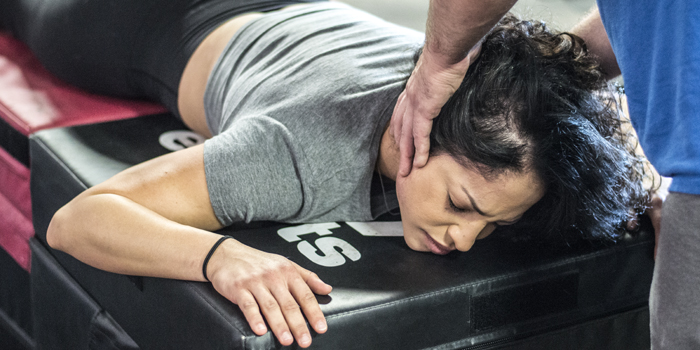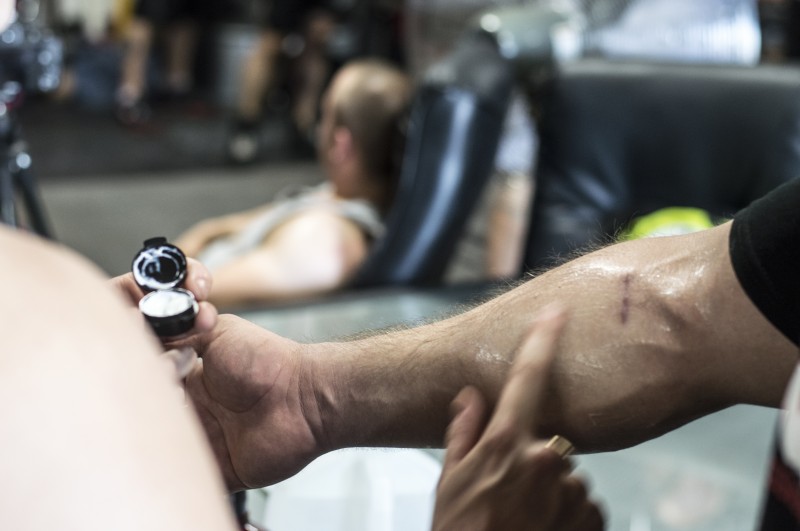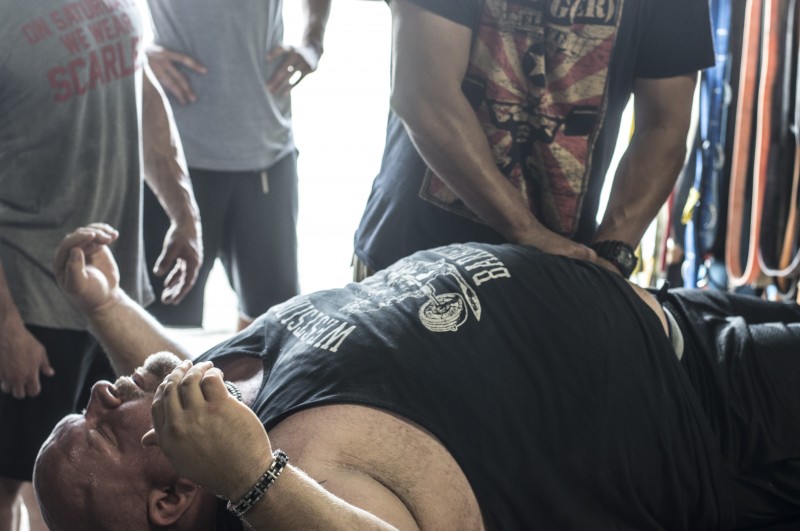
Your joint health is directly related to your ability to train to your full potential and well into your old age. Over the years I’ve asked many seasoned lifters what the number one thing is they wish they’d paid more attention to when they were younger. 9 times out 10 the answer is something to the tune of, “I wish I’d taken better care of my joints” or something along the lines of “less ego, more tension.”
For what reason?
Nowadays, much of that same older lifting crowd has a laundry list of exercises they simply can’t perform pain-free. Their joints are creaky, irritable, and their range of motion has suffered greatly. In short, their ability to train has become limited by their own body.
Regardless of your goal, this is no bueno. Not to mention the fact that irritable, painful joints are straight up painful and uncomfortable.
RELATED: Ten Time-Proven, Big-Three Technique Tweaks for Happy Joints
As a slap in the face, and also the saving grace for my fellow young lifters, it’s easy to avoid this degenerative downfall and instead promote longevity in your joints.
But so few do it.
Here’s what you can do to promote long-term joint health.
1. Lift with your muscles, not your ego.
Minimizing the amount of stress and tension you place on your joints and maximizing the amount you can place on the target muscle of a given exercise is paramount to caring for your joints.
I’m sure you’ve seen the dudes who have no business benching two plates, but they never hesitate to load up the bar. From there, they proceed to do whatever it takes (regardless of how painful and awkward it looks) to get the bar off of their chest.
Or the guys who stand two feet away from the mirror and use as much bodily momentum as possible to “curl” the 50-pound dumbbells. Congrats on your curl PR, bro. And enjoy your early-onset biceps tendinitis.
If you’re in the camp of either the above, it’s time you take a step back. Focus on placing the stress of the load in the target muscle, not your joints. You’re in the gym to train your muscles, after all. This may mean that you use lighter loads and slow down the pace of your reps and sets. Fear not, though — I can all but promise that you’ll get better training results, as well as feel a hell of a lot better.
Remove your ego. Nobody is paying attention to how much you’re lifting. What many DO notice, though? The jackass blatantly doing whatever he can and using every trick in the book to “move” more and more weight.
Create a strong mind-muscle connection. Do so, and harness the pump. Nobody ever got a wicked, skin-splitting arm pump by using their bodily momentum to heave up their dumbbells. No. Instead, focus on feeling every inch of each rep while ensuring that you move through a full range of motion. Place emphasis on the stretched position and squeeze hard in the contracted position. This will bring forth the pump you’ve been searching for.
The excellent news here? When you’re able to achieve such a pump, it’s a great indication that you’ve placed much of the load into your muscles, not your joints.
2. Stay hydrated.
If you’re pursuing the pages of elitefts.com, I’m going to assume that you understand the importance of drinking water. But just in case, here’s a quick refresher.
Your goal should be somewhere in the range of 3-5 liters per day (depending on climate, bodyweight, training, etc). Or you can be an adult and make a conscious, proactive effort to be and remain hydrated throughout the day. 4-8 ounces of water every hour (again, the amount is individual and contextual) is a great target to aim for.
For a fail-proof method of staying on top of your hydration, you should pay attention to and monitor your urine colour throughout the day. If it’s pale and clear, you’re well hydrated. If it’s dark and yellow, you’ve got some water to drink.
Ensuring proper hydration will serve to lubricate your joints and help prevent them from “grinding” up on one another during your session and day-to-day.
From a muscular standpoint, water is crucial in muscular contraction. If you’re dehydrated, your muscles won’t have any electrolytes to put to use and will cramp. If you’ve ever had a calf cramp you know the pain I’m talking about.
Additionally, your muscles are controlled by nerves. If you lack adequate water and electrolyte balance, your muscular strength and control will also be inhibited. Finally, water also transports nutrients into your muscles and helps to carry waste out of your body.
Hydration is both simple, and a zero-sum game. Either you are or you aren’t.
Make sure that you are.
Go drink 12 ounces of water. I bet you need it.
3. Utilize soft tissue therapy.
Myofasical release, trigger point therapy, muscle energy technique, and PNF (proprioceptive neuromuscular facilitation), among others, are different methods of soft tissue therapy.
The end goal of any form of soft tissue therapy is the assessment, treatment, and management of soft tissue injury, pain, or dysfunction. Aside from staying hydrated and being religious with fish oil intake, soft tissue work is one of the best (if not the best) things you can do to promote long-term joint health. The purpose of nearly every form of soft tissue therapy is to break up scar tissue, reduce bodily inflammation, and increase blood flow throughout your body.
Once the scar tissue is broken, blood is flowing, and knots are worked out, your mobility and range of motion increase exponentially — all of which are fantastic for your joint health.
The specific form you use matters much less than the fact that whatever you chose to get done, you do regularly. Find the form that serves your needs the best and get it done regularly. That's it, that’s all.
4. Supplement wisely.
Similar to many training goals, there are a number of supplements that will help and accelerate your progress (or healing). Your joints are no different. I’d also argue that supplements in this realm are much more proven than any in the fat loss and muscle building territory.
Fortunately for something as crucial to your long-term lifting success as joint health, supplementing is both affordable, easy, and readily available.
- Fish Oil
- Curcumin
- Glucosamine
- Chondroitin
You can typically find glucosamine and chondroitin packaged together as one supplement. Just be sure that the dosing for both is at a clinical level. Otherwise, you might as well just swallow your money.
Fish Oil
Fish Oil is incredible for joint health. The fatty acids (EPA/DHA) aid in joint lubrication, can improve the “suppleness” of your joints, and directly act in reducing inflammation (which is a massive contributor to angry joints).
The optimal dosage of fish oil leans heavily on your goal (general health, reducing soreness, inflammatory reduction, etc) as well as the content of the rest of your diet. This means that if you typically eat fish a few times a week, you need much less (if any at all) supplemental fish oil than someone who doesn’t eat any (or very little) fish.
Keeping your goal at the forefront, do your research and find what makes the most sense for you.
Curcumin
Curcumin is the active ingredient in the spice Turmeric. It’s also found—albeit in limited amounts—in ginger. Curcumin is a powerful anti-inflammatory molecule that happens to be extremely synergistic with fish oil.
While extremely beneficial, supplementing curcumin is tricky. Thanks to having poor bioavailability, curcumin needs to be supplemented with something that enhances its absorption. No problem — the majority of curcumin supplements are meshed with piperine (black pepper extract).
But, the anti-inflammatory nature of curcumin also has great digestive benefits should the compound not be absorbed and make it to your colon. If you’re looking to use curcumin to bring down inflammation in your gut and improve digestion, then you’ll want to avoid taking it with an absorption enhancer.
RECENT: Close-Grip Bench, Dips, and Chins — When and Why I Don't Program
For any of curcumin’s systemic purposes, you’ll need to supplement 80-500mg in conjunction with an absorption enhancer. If you’re only looking for the intestinal benefits, you’ll be good to go with either using 2-4g of turmeric (the spice itself) or the same systemic dose but without an absorption assistance.
Glucosamine
Glucosamine is delivered from shellfish, and its primary function is to slow joint breakdown and the symptoms of, or onset of osteoarthritis.
Glucosamine is best supplemented in doses of 300-500mg, three times per day with food. It also happens to be synergistic with Chondroitin, which we’ll dig into next.
Chondroitin
While there isn’t much in the way of quality research on Chondroitin, there’s an overwhelming amount of anecdotal evidence (I’ve experienced this first hand) that support Chondroitin being effective in terms of reducing joint swelling, pain and, stiffness. This is even more so when taken in conjunction with Glucosamine.
As it stands, the best practice for dosing Chondroitin is either in a singular daily dose of 1000-1200mg or that same dose split into 2-3 servings with food.
Beyond these supplements, you shouldn’t need anything else to make a huge difference in how your joints feel.
The Final Rep
The integrity and health of your joints is incredibly important, and absolutely crucial in keeping you in the gym long into your life.
I cannot stress the importance of doing what you can to actively improve your joint health from day one. That being said, I do understand the resistance. Saying that one of your goals is to “build and maintain joint health” is far from sexy, and pales in comparison to adding two inches to your biceps peak.
The kicker, though?
If you don’t, chances are that you won’t have much luck building that biceps peak.
Alex is a self-proclaimed anti-meathead and part-time nerd. When he's not working towards Greek God status in the gym or learning how to better serve his clients, he can be found exploring how to further crush life, perfect his flair in the kitchen, or pulling the perfect shot of espresso. You can learn what he's all about at MASSthetics.












@Mark - I have no personal experience with HA, so I can't say for sure. From some cursory reading, you should have most of your needs covered with the above, and you'll save yourself an injection.